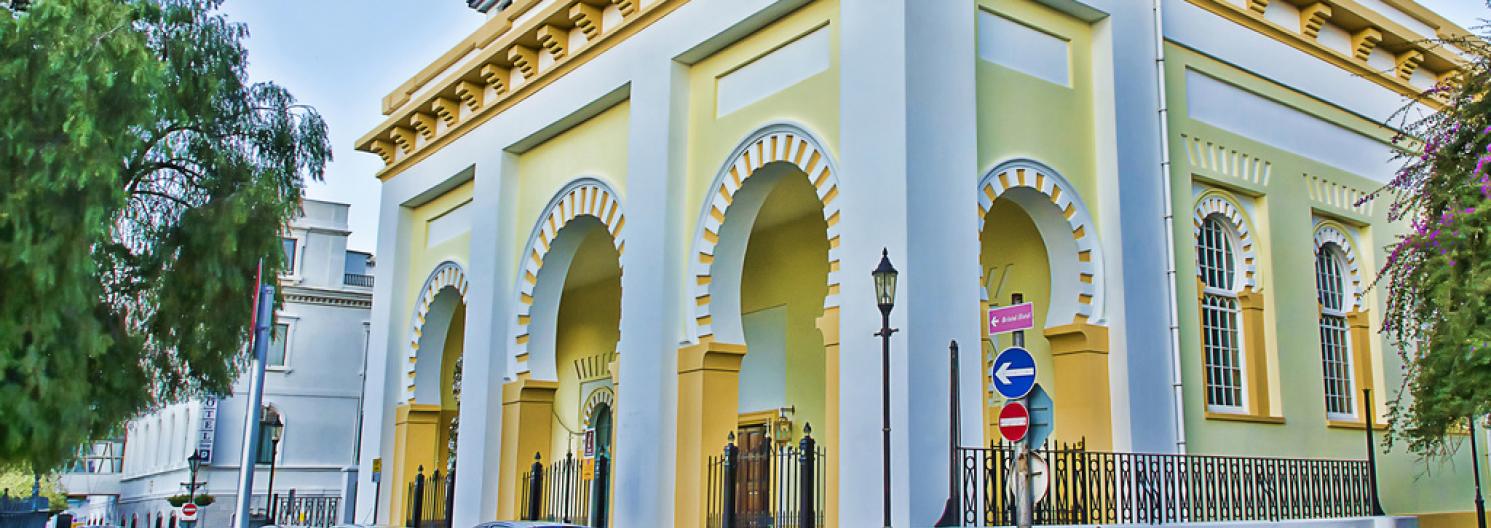Our cathedrals
Cathedrals traditionally serve a community as the mother church of the diocese and are the seat of the bishop. Our cathedral is Gibraltar but the Diocese in Europe also has two “pro-cathedrals” which also serve as seats for the bishop. These are in Brussels (where Bishop Robert is based) and Malta. By convention, the senior clergyperson responsible for running the cathedral is called the dean; the same role at a pro-cathedral is carried out by the chancellor.
Holy Trinity, Gibraltar
Building work on what was then Holy Trinity Church began in 1825 and was completed in 1832. Ten years later the church was raised to Cathedral status with the creation of the Diocese of Gibraltar, which then included all Anglican chaplaincies from Portugal to the Caspian Sea.
A small stone with a cross is positioned in the wall behind the baptismal font. It comes from Coventry cathedral which was destroyed by bombing in the Second World War and which has developed a ministry for reconciliation.
The Diocese of Europe in its current form was inaugurated at a service in the cathedral in January 1981, in the presence of the Governor of Gibraltar, General Sir William Jackson, and the Diocesan Bishop, John Satterthwaithe.
For more details about the life and work of the cathedral, visit Holy Trinity's website linked below.
Holy Trinity, Brussels
The main cathedral building is in the heart of Brussels and dates back to the 1880s. It was first known as Christ Church. The current church was formed in 1958 by the amalgamation of two congregations in Brussels – Christ Church and the Church of the Resurrection – but the congregation can trace its history back to before the Battle of Waterloo in 1815.
The pro-cathedral is the regional centre or Anglican worship in northern Europe and maintains close links with the ICS mission society. The pro-cathedral plays an active role in local and national relationships with other Belgian and international churches.
The multicultural nature of Brussels is reflected in the pro-cathedral’s diverse congregation which includes people from more than 40 countries. It is the spiritual home for many professionals working in the European political institutions and other multinational organisations.
For more details, including information about the team at Holy Trinity, visit the website below.
St Paul, Valetta
The cathedral was built in the neo-classical style on the spot once occupied by Auberge d’Allemagne - the conventual home of the German Knights Hospitaller. Queen Adelaide, wife of William IV, paid for the cathedral and laid the foundation stone on 20 March 1839. Building work was completed in 1844.
The dedication of the church to St Paul was a reminder of the first Christian missionary to Malta, when he was shipwrecked on the island in AD 59/60. St Paul is considered to be the spiritual father of the Maltese. His subsequent stay of three months brought the Christian message to the islands and is popularly regarded as one of the great events in the nation’s history.
For more details about the life and work of the pro-cathedral, visit their website below.
